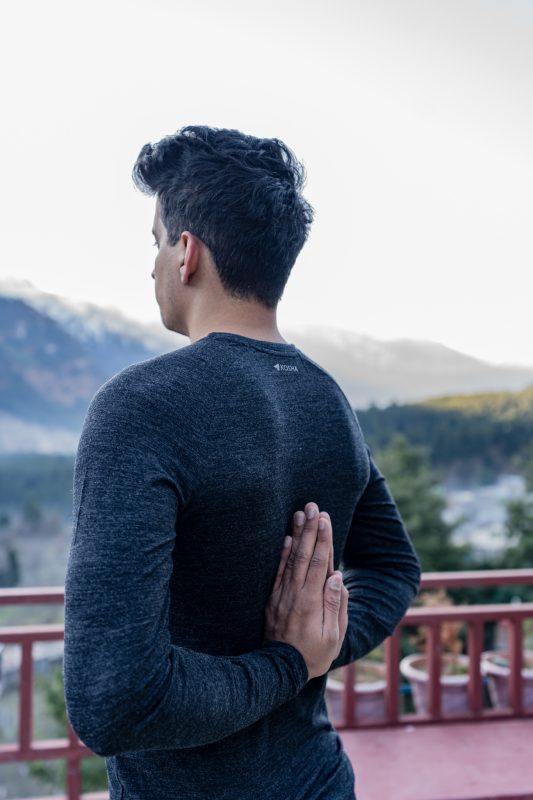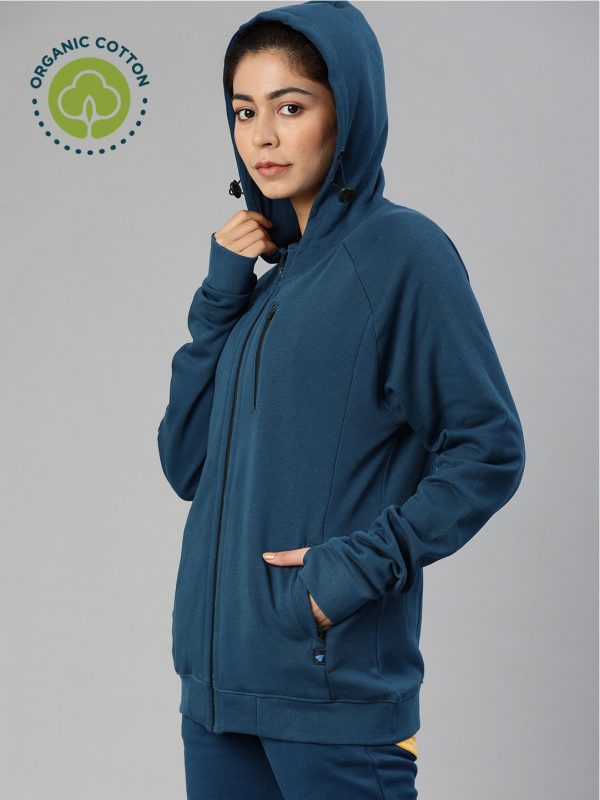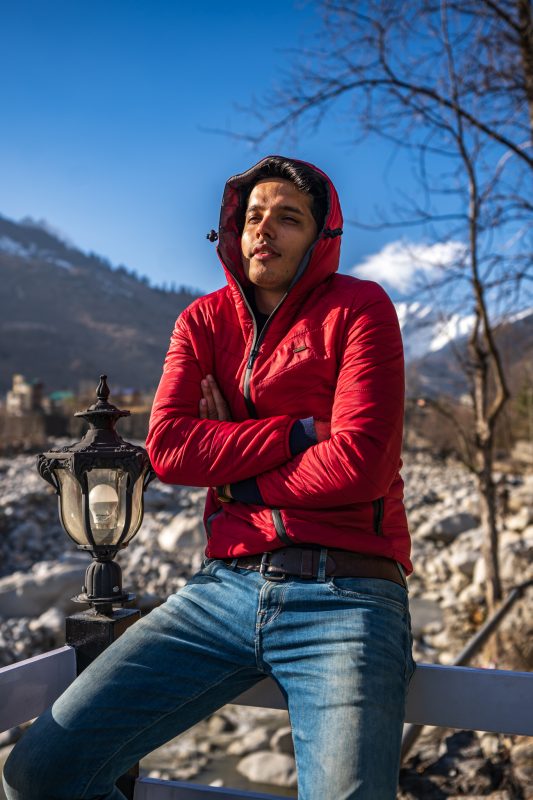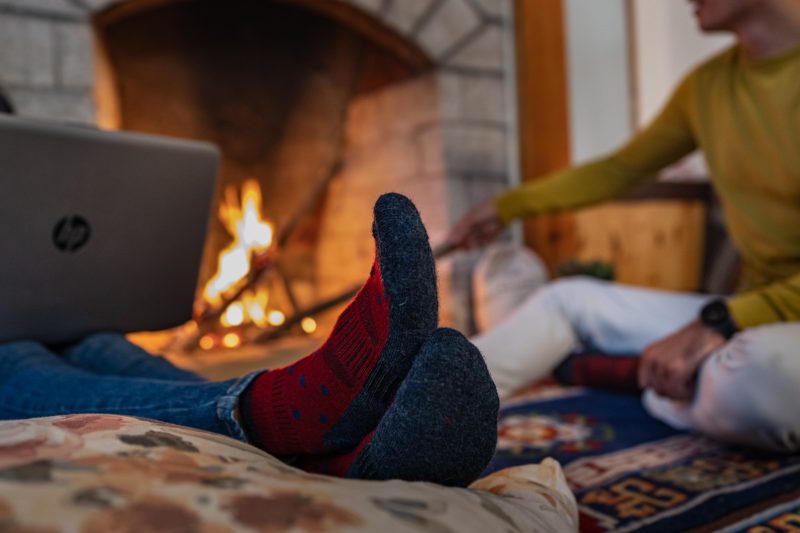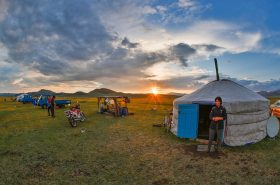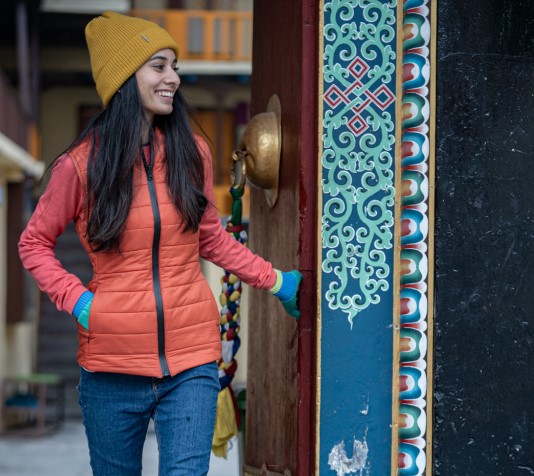
Skiing in the French Alps offers an unparalleled winter experience, boasting world-class resorts, stunning alpine landscapes, and diverse slopes for all skill levels. Skiers and snowboarders can enjoy pristine powder, modern amenities, and a vibrant après-ski scene from the iconic Chamonix to the glamorous Courchevel. The region’s rich culture, exquisite cuisine, and charming mountain villages add to the allure, making the French Alps a top destination for winter sports enthusiasts from around the globe.
Table of Contents
Understanding Alpine Weather
Before skiing in the French Alps, be informed about the weather conditions as they can vary widely due to the region’s diverse geography and changing mountain climates. Here’s an overview of the typical weather conditions you might encounter:
- Snowfall: The French Alps receive abundant snowfall, especially at higher altitudes. This creates excellent skiing and snowboarding conditions on the slopes. Snowfall tends to be more frequent and heavier in December through February.
- Temperature: Temperatures can range from cold to very cold, especially at higher elevations. Early in the season, in December and January, temperatures can often drop below freezing. In March and April, temperatures start to rise, but it’s still chilly.
- Sunny Days: You can expect sunny days with clear skies, particularly in mid-winter. These are great days for enjoying the slopes and the stunning alpine views.
- Cloud Cover: Cloudy days are also common, especially in areas of higher elevation. Cloud cover can affect visibility on the slopes, so it’s advisable to check the weather forecast before heading out.
- Wind: Wind can vary based on the specific location, but higher elevations are more susceptible to strong winds. Wind chill can make the temperatures feel even colder, so proper windproof clothing is essential.
Remember that weather conditions can change rapidly in mountainous regions, so it’s recommended to be prepared for a range of conditions. Dress in layers, wear appropriate waterproof and insulated clothing, and stay informed about local weather forecasts and safety advisories.
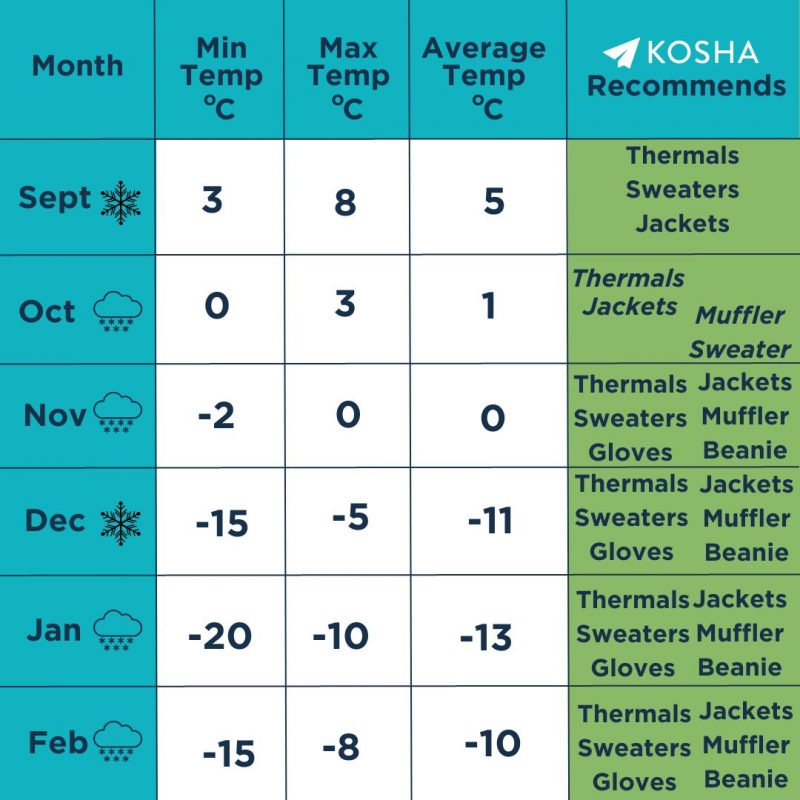
Temperature For skiing in the French Alps
The Layering Concept
Explanation of the layering system for skiing apparel
The layering system for skiing apparel is a strategic approach to dressing that involves wearing multiple clothing layers to regulate your body temperature, manage moisture, and provide comfort during various weather conditions while skiing. The system typically consists of three main layers: the base layer, the insulating layer, and the outer layer. Each layer serves a specific purpose:
- Base Layer: The base layer, also known as the “next-to-skin” layer, is designed to manage moisture and keep you dry by wicking sweat away from your body. It should fit snugly without being overly tight. This layer is usually made of moisture-wicking materials like synthetic fabrics or merino wool. It helps maintain your body’s warmth and prevents you from feeling cold and clammy when you sweat.
- Insulating Layer: The insulating layer provides warmth by trapping heat close to your body. This layer can be made of fleece, down, or synthetic insulation materials. It should provide good thermal insulation without restricting your movement. Depending on the outside temperature and your comfort level, you can choose the thickness of the insulating layer. It’s worth noting that you can use multiple insulating layers for added warmth, especially in colder conditions.
- Outer Layer (Shell): The outer layer, also called the shell layer, is your protection against wind, snow, and moisture. It should be waterproof, windproof, and breathable. This layer is responsible for keeping you dry from external elements while allowing moisture to escape from the inside (perspiration). Outer layers often have features like taped seams, adjustable cuffs, and ventilation options. There are two main types of outer layers: hard shell and soft shell. Hard shells are more waterproof and windproof, while soft shells offer greater breathability and flexibility.
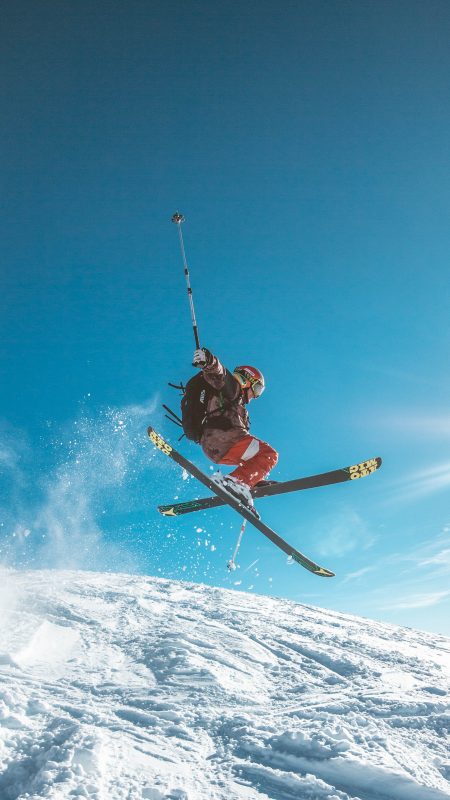
Skiing in the Alps
Benefits of using multiple layers for warmth, moisture management, and flexibility
Using multiple layers for warmth, moisture management, and flexibility while skiing offers several benefits that contribute to your overall comfort, performance, and safety on the slopes:
- Effective Temperature Regulation: Layering allows you to adjust your clothing to changing weather conditions and activity levels. You can add or remove layers to regulate your body temperature and avoid overheating or getting too cold. This adaptability is especially important in fluctuating mountain weather.
- Moisture Management: Each layer serves a specific purpose in managing moisture. The base layer wicks sweat away from your skin, the insulating layer keeps you warm by retaining heat even when damp, and the outer layer protects you from external moisture while allowing perspiration to escape. This system keeps you dry and comfortable, reducing the risk of hypothermia.
- Optimal Warmth: The insulating layer traps warm air close to your body, creating a buffer against cold temperatures. Multiple layers of insulating materials provide more effective warmth than a single thick layer, as they create pockets of air that act as natural insulation.
- Flexibility and Mobility: Using multiple layers instead of a single bulky garment offers greater flexibility and mobility. You can move more freely without feeling restricted by a heavy coat, making it easier to navigate challenging terrain and execute precise movements while skiing.
- Versatility: Layering allows you to adapt your outfit to various conditions. If the weather warms up or you engage in high-intensity activities, you can remove a layer to prevent overheating. Conversely, you can add layers for extra warmth when temperatures drop.
Base Layer: Keeping Dry and Insulated
Role of the base layer in moisture-wicking and thermal regulation
The base layer plays a crucial role in both moisture-wicking and thermal regulation when it comes to your overall comfort and performance during outdoor activities like skiing. Here’s how the base layer functions in these aspects:
1. Moisture-Wicking: The primary purpose of the base layer is to manage moisture by wicking sweat away from your skin. When you engage in physical activities like skiing, your body generates heat, causing you to sweat. If this sweat remains in contact with your skin, it can lead to discomfort, chafing, and even cooling of the body when it evaporates.
By keeping your skin dry, moisture-wicking base layers help prevent hypothermia and maintain a more comfortable body temperature.
2. Thermal Regulation: The base layer also contributes to thermal regulation by providing a close-to-skin layer that helps retain your body heat. The thin layer of fabric rests directly on your skin and creates an insulating barrier that traps warm air close to your body. This is important because even in cold conditions, your body continues to produce heat, and retaining that heat is essential for staying warm.
Types of base materials (synthetic, merino wool) and their advantages
Base layers are typically made from materials like synthetic fabrics (polyester, nylon), merino wool, or a combination of both. Synthetic fabrics are known for their excellent moisture-wicking properties and fast-drying capabilities. Merino wool, on the other hand, is a natural fiber that is highly effective at moisture management while also providing additional insulation and odor resistance.
When choosing a base layer, consider the intensity of your activity, the expected weather conditions, and your personal comfort preferences. A snug but not constricting fit is important for optimal moisture-wicking and thermal regulation. Overall, a well-chosen base layer enhances your comfort, keeps you dry, and contributes to maintaining a consistent and comfortable body temperature while skiing or engaging in other outdoor activities.
Mid-Layer: Additional Warmth
Why should you wear mid-layer
Wearing a mid-layer in your clothing system, particularly when skiing or engaging in outdoor activities, offers several benefits that contribute to your overall comfort, warmth, and adaptability to changing weather conditions. Here’s why you should consider incorporating a mid-layer into your outfit:
- Enhanced Warmth: The mid-layer adds an extra layer of insulation between the base layer and the outer layer. This additional layer helps trap warm air close to your body, providing more effective insulation against the cold. In colder weather or at higher elevations, a mid-layer can significantly increase your overall warmth, allowing you to stay comfortable and enjoy your activity for longer periods.
- Customizable Comfort: Mid-layers come in various weights and thicknesses, allowing you to choose the level of warmth that suits the current conditions. You can easily adjust your clothing by adding or removing the mid-layer based on the temperature, your activity level, and your personal comfort preferences. This versatility makes mid-layers essential for adapting to changing weather throughout the day.
- Improved Breathability: Mid-layers are often designed with breathable materials that allow excess heat and moisture to escape. This prevents overheating during high-intensity activities while maintaining a comfortable body temperature. By allowing your body’s natural cooling mechanisms to work effectively, a mid-layer contributes to your overall comfort.
Various options like fleece jackets, softshell layers, and hybrid materials
When choosing a mid-layer for your outdoor activities, including skiing, you have several options to consider. Each type of mid-layer has its advantages and is suitable for different conditions. Here are some common options:
- Fleece Jackets: Fleece jackets are a popular choice for mid-layers due to their excellent warmth-to-weight ratio and breathability. They provide insulation by trapping warm air close to your body while allowing moisture to escape.
- Softshell Layers: Softshell mid-layers offer a combination of insulation, breathability, and water resistance. They are designed to provide some protection against light rain and wind while maintaining breathability. Softshells are ideal for active pursuits where you might encounter changing weather conditions.
- Hybrid Materials: Some mid-layers combine different materials for specific performance benefits. For example, a hybrid mid-layer might incorporate fleece in areas where warmth is most needed and softshell or stretch panels in areas where mobility and breathability are key.
- Synthetic Insulated Jackets: Synthetic insulated mid-layers use man-made insulation materials to provide warmth even when wet. They are a good choice for damp conditions, as they retain their insulation properties even if they become saturated. Synthetic insulation is often used in jackets designed for activities like skiing where there’s a chance of exposure to snow and moisture.
- Down Jackets: Down-filled mid-layers offer exceptional warmth-to-weight ratio and compressibility. They are best suited for dry and cold conditions. However, down loses its insulation properties when wet, so it’s important to pair a down mid-layer with a waterproof or water-resistant outer layer in potentially wet conditions.
Outer Layer: Shielding from Elements
The outer layer’s role in protecting against wind, snow, and moisture
The outer layer, often referred to as the shell layer, plays a critical role in protecting you against various elements like wind, snow, and moisture during outdoor activities, including skiing. Its design and materials are geared toward providing effective barriers against these elements while still allowing moisture from perspiration to escape. Here’s a breakdown of the outer layer’s protective functions:
1. Wind Protection: The outer layer acts as a shield against wind, preventing cold air from penetrating your clothing system and robbing you of body heat. Wind chill can lead to rapid cooling of the body and increase the risk of hypothermia.
2. Snow Protection: When skiing, you’re exposed to falling snow and powdery conditions. The outer layer’s design, often including waterproof and water-resistant materials, helps repel snowflakes and prevent them from melting into your clothing.
3. Waterproofing and Water Resistance: The outer layer often incorporates waterproof or water-resistant materials and coatings to protect against rain, snow, and wet conditions. Water-resistant coatings like DWR (Durable Water Repellent) help water bead off the surface, preventing saturation and maintaining breathability.
4. Ventilation: Outer layers often feature ventilation options such as underarm zippers or mesh-lined pockets. These openings allow you to regulate temperature by releasing excess heat and moisture during high-intensity activities.
When selecting an outer layer for skiing or other outdoor activities, consider the anticipated weather conditions, the level of protection needed, and the type of activities you’ll be engaging in. The right outer layer will effectively shield you from the elements while ensuring breathability and comfort, contributing to a safe and enjoyable outdoor experience.
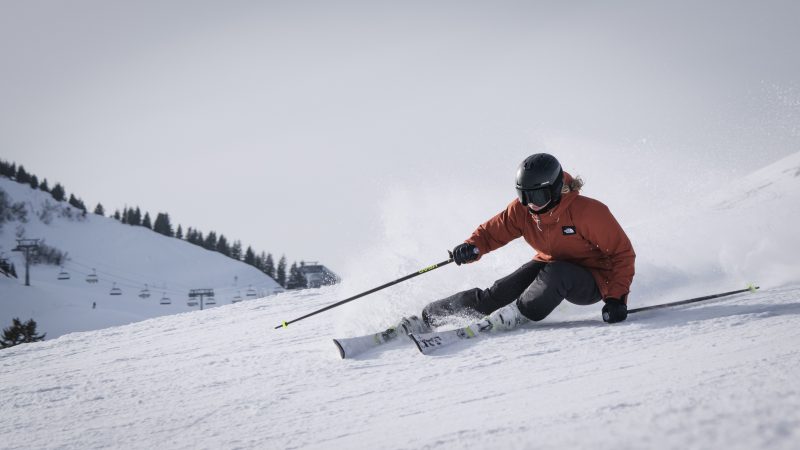
Wonderful skiing experience
Opting for waterproof and breathable materials for optimal comfort
Opting for waterproof and breathable materials in your outdoor clothing, especially when participating in activities like skiing, is a smart choice to ensure optimal comfort and performance. These materials offer a balance between protection from external elements and the ability to manage moisture effectively. Here’s why waterproof and breathable materials are essential for your outdoor adventures:
1. Protection from Moisture: Waterproof materials create a barrier that prevents rain, snow, and moisture from penetrating your clothing. This protection keeps you dry, which is crucial for maintaining a comfortable body temperature and avoiding the discomfort of wet clothing.
2. Temperature Regulation: Waterproof and breathable materials contribute to effective temperature regulation. They keep you warm by preventing cold air and moisture from penetrating, while still allowing excess heat to escape. This balance is essential for comfort and safety in varying weather conditions.
3. Flexibility and Movement: Modern waterproof and breathable materials are designed to be lightweight, flexible, and not overly stiff. This ensures that your movement isn’t restricted, which is crucial for activities like skiing that require agility and precision.
4. Versatility: Waterproof and breathable materials are versatile and suitable for a wide range of outdoor activities beyond skiing. Whether you’re hiking, snowboarding, or simply enjoying the outdoors, these materials provide protection and comfort across various environments.
5. Durability: Many waterproof and breathable materials are engineered to be durable and able to withstand the rigors of outdoor activities. This means your clothing will last longer and provide consistent performance throughout its lifespan.
Accessories for Ultimate Protection
Importance of accessories: gloves, neck gaiters, hats, and goggles
Accessories such as gloves, neck gaiters, hats, and goggles are crucial when skiing in the French Alps due to the challenging mountain environment and varying weather conditions. These accessories provide essential protection, warmth, and comfort, enhancing your overall skiing experience and ensuring your safety.
1. Gloves: Gloves are essential to protect your hands from cold temperatures, wind, and moisture. Properly insulated and waterproof gloves keep your fingers warm and dry, preventing discomfort, frostbite, and reduced dexterity. Look for gloves that offer a balance between insulation and breathability, allowing your hands to stay warm without sweating excessively.
2. Neck Gaiters: Neck gaiters or buffs are versatile accessories that can be worn in various ways to protect your neck and face from wind, cold, and UV exposure. They can be pulled up to cover your nose and mouth or worn as a scarf to keep your neck warm. Neck gaiters help prevent chafing from jacket collars and provide an extra layer of insulation for your upper body.
3. Beanies: A hat or beanie is essential for retaining body heat, as a significant amount of heat can be lost through the head. A well-insulated hat protects your ears and head from cold temperatures and wind, enhancing your overall warmth and comfort. Opt for a hat that covers your ears for maximum protection.
4. Goggles: Goggles are crucial for protecting your eyes from glare, snow, wind, and UV radiation at higher altitudes. They also provide better visibility in changing light conditions, enhancing your safety while skiing down slopes. Look for goggles with appropriate lens tints for varying light conditions, and ensure they fit snugly to prevent snow and wind from entering.
Skiing in the French Alps can be really fun if you are careful about everything, especially the weather conditions which can change rapidly and temperatures can be extreme, these accessories are not just about comfort but also about safety.
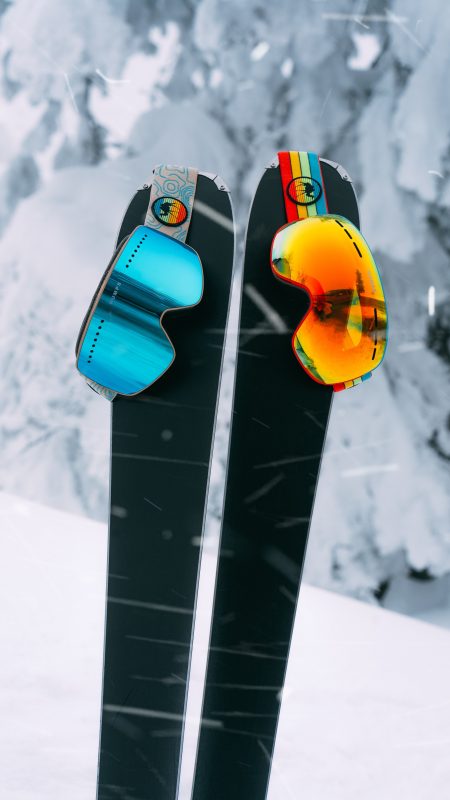
Goggles for skiing
Socks and Footwear
Selecting appropriate ski socks for warmth and moisture control
Selecting the right ski socks for warmth and moisture control is essential for comfortable and enjoyable skiing in the French Alps.
1. Material: Opt for moisture-wicking and insulating materials. Merino wool is an excellent choice as it effectively wicks moisture away from the skin, provides insulation even when damp, and offers natural odor resistance.
2. Thickness: Choose a sock thickness that suits the weather conditions and your comfort preferences. Thicker socks provide more insulation and are suitable for colder days, while lighter socks are better for milder weather. Keep in mind that your ski boots already provide insulation, so excessively thick socks can lead to discomfort and reduced circulation.
3. Cushioning: Look for socks with cushioning in areas where you need it most, such as the shin, heel, and toe. Cushioning enhances comfort and helps prevent pressure points and blisters.
4. Proper Fit: Ski socks should fit snugly but not be overly tight. A proper fit prevents wrinkles and bunching, which can cause discomfort and chafing. Make sure the socks provide support without constricting circulation.
5. Breathability: Skiing can be physically demanding, and your feet may heat up during activity. Breathable socks help regulate temperature by allowing excess heat to escape.
Remember that socks are a crucial part of your overall comfort on the slopes. Investing in high-quality ski socks designed specifically for skiing will help you stay warm, dry, and focused on enjoying the wonderful experience of skiing in the French Alps.
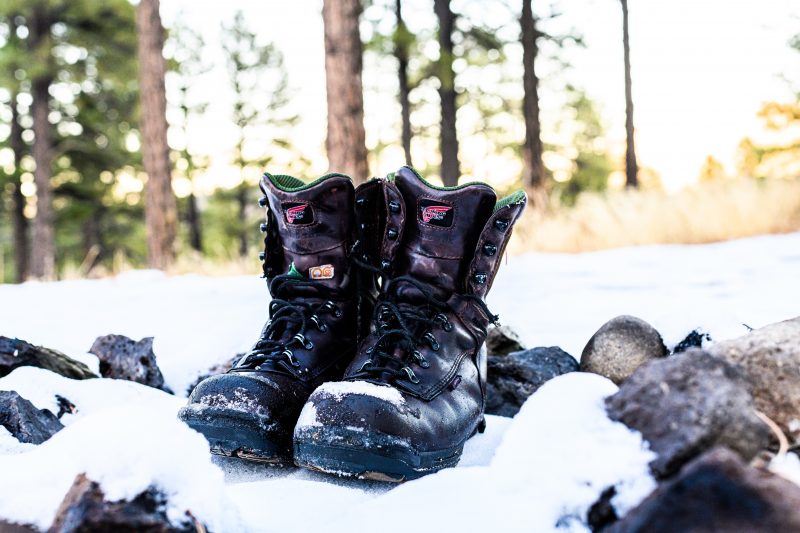
Skiing Boots
Types of ski boots
There are several types of ski boots available, each designed to cater to different skiing styles, terrain preferences, and skill levels. When selecting ski boots for skiing in the French Alps, it’s important to consider their compatibility with socks to ensure optimal comfort and performance.
1. Alpine (Downhill) Ski Boots: These are the most common type of ski boots and are suitable for groomed slopes, all-mountain skiing, and resort skiing. Alpine ski boots are designed to provide precise control and power transmission. They are often well-insulated and provide good support.
2. Backcountry Ski Boots: Backcountry or touring ski boots are designed for off-piste skiing, backcountry exploration, and ski mountaineering. They are usually lighter and offer more flexibility for uphill climbing. These boots often have a walk mode that allows for easier movement when not skiing downhill.
3. Freestyle Ski Boots: Freestyle or park ski boots are tailored for terrain park and freestyle skiing. They tend to have a more flexible construction and extra cushioning for landing jumps and tricks.
4. All-Mountain Ski Boots: All-mountain ski boots aim to balance performance on various terrains and skiing styles. They offer a blend of comfort and responsiveness.
5. Racing Ski Boots: Racing ski boots are designed for advanced skiers seeking maximum precision and control. They often have a tight fit to enhance responsiveness.
Ultimately, the best sock-boot combination depends on your skiing style, comfort preferences, and the specific conditions you’ll encounter in the French Alps. Prioritize the fit, material, and properties of both your ski socks and boots to ensure an enjoyable and safe skiing experience in the French Alps.
Avoiding bulkiness and ensuring proper circulation in the feet
Avoiding bulkiness and ensuring proper circulation in your feet while skiing in the French Alps is crucial for maintaining comfort, warmth, and performance on the slopes. Here are some tips to achieve this balance:
1. Select Properly Fitted Boots: Start with well-fitting ski boots. Boots that are too tight or too loose can affect circulation and lead to discomfort. Make sure your boots offer the right balance between a snug fit for control and sufficient room for your toes to wiggle without being cramped.
2. Choose Thin, Moisture-Wicking Socks: Opt for thin, moisture-wicking ski socks that provide effective moisture management without adding unnecessary bulk. Thin socks help maintain proper boot fit and don’t compress your feet, ensuring better circulation.
3. Avoid Layering Socks: Avoid wearing multiple pairs of socks as it can lead to tightness, discomfort, and reduced circulation. Instead, choose a single pair of high-quality ski socks designed to offer both insulation and moisture management.
4. Consider Ski-Specific Socks: Invest in ski-specific socks that are designed to provide support and cushioning in key areas without adding bulk. These socks are engineered to meet the demands of skiing and maintain proper fit within ski boots.

Pros and Cons of Renting Ski Apparel
Renting vs. Buying Ski Apparel
Pros and cons of renting ski gear vs. investing in your own
Deciding whether to rent ski gear or invest in your equipment depends on several factors, including your skiing frequency, skill level, budget, convenience, and personal preferences. Here are the pros and cons of both options:
Renting Ski Gear:
Pros:
- Cost Savings: Renting ski gear can be more cost-effective if you ski infrequently or only for a short period each year. It eliminates the upfront cost of purchasing equipment.
- Convenience: Renting gear eliminates the need to transport bulky equipment to and from the slopes. It’s especially convenient for travelers who don’t want to deal with the hassle of checking in ski gear at the airport.
- Current Technology: Rental shops often offer the latest ski and snowboard equipment, allowing you to try out newer models without committing to a purchase.
- Minimal Maintenance: Renters don’t have to worry about maintaining, tuning, and storing their equipment during the off-season.
Cons:
- Limited Selection: Rental shops might have a limited selection of equipment, and availability could be an issue during peak skiing seasons.
- Fit and Comfort: Rented gear might not fit as well as personalized equipment, potentially leading to discomfort and decreased performance.
- Time Constraints: Renting gear requires additional time to visit rental shops and go through the fitting process, which could eat into your skiing time.
- Long-Term Cost: If you ski frequently, the cumulative rental costs over time might exceed the cost of purchasing your gear.
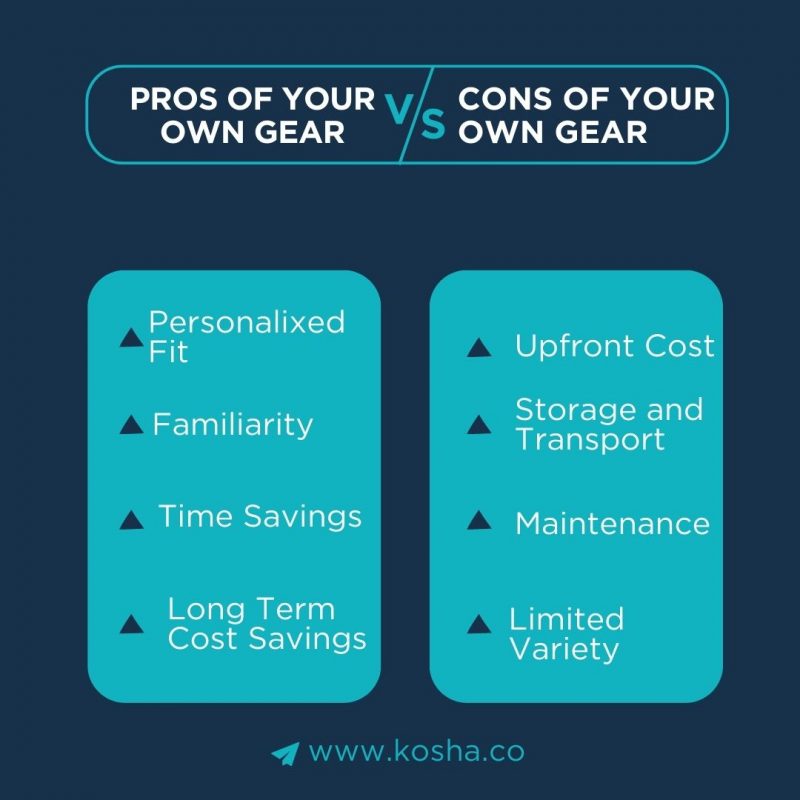
Pros and Cons of Investing in Your Own Ski Gear
Investing in Your Own Ski Gear:
Pros:
- Personalized Fit: Your equipment can be tailored to your body shape, skiing style, and preferences for optimal comfort and performance.
- Familiarity: Using your gear allows you to become more familiar with it over time, enhancing your control and confidence on the slopes.
- Time Savings: Owning your gear eliminates the need to visit rental shops, speeding up the process of getting on the slopes.
- Long-Term Cost Savings: If you ski frequently, purchasing your gear can be more cost-effective in the long run compared to repeated rentals.
Cons:
- Upfront Costs: Buying ski gear requires a significant upfront investment, including skis, boots, bindings, poles, and possibly other accessories.
- Storage and Transport: You’ll need to find storage space for your equipment during the off-season and transport it to and from the slopes, which can be inconvenient for travelers.
- Maintenance: You’re responsible for maintaining and tuning your equipment, which may require additional time and cost.
- Limited Variety: While you can buy multiple pairs of skis for different conditions, it’s not as flexible as renting different types of skis as needed.
Ultimately, the decision depends on your skiing habits and priorities. If you’re an occasional skier, renting might be more practical. However, investing in your gear could provide better performance and long-term value if you’re a frequent skier who values personalized equipment. It’s essential to weigh the pros and cons based on your individual needs and preferences.
FAQs
When is the best time to ski in the French Alps?
The peak skiing season in the French Alps typically runs from December to April, with the best snow conditions generally found between January and March.
Which airports are convenient for reaching the French Alps for skiing?
Airports such as Geneva, Lyon, Chambéry, and Grenoble provide easy access to various ski resorts in the French Alps.
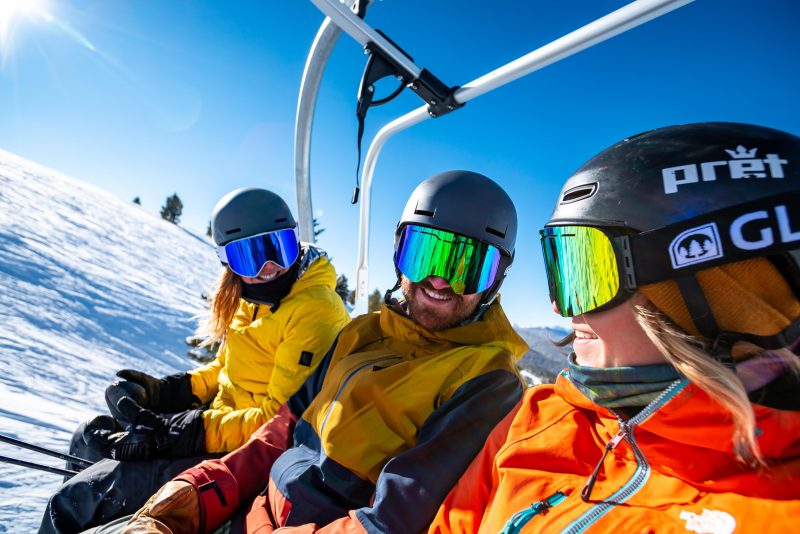
Skiing in the French Alps
What type of clothing should I pack for skiing in the French Alps
Pack moisture-wicking base layers, insulating mid-layers, waterproof outer layers, gloves, hats, goggles, and appropriate ski socks.
Are there options for non-skiers in the French Alps?
Yes, there are plenty of activities for non-skiers, such as snowshoeing, spa visits, sightseeing, and exploring nearby towns.
What safety precautions should I take while skiing in the French Alps?
Wear proper safety gear, adhere to skiing etiquette, be aware of your skill level, and follow the instructions of the ski patrol and resort staff.
Conclusion
In conclusion, mastering the art of layering is essential for a comfortable and enjoyable skiing experience in the breathtaking French Alps. As you traverse the slopes amidst varying weather conditions and altitudes, a well-thought-out layering system becomes your shield against the elements and a key to maintaining optimal performance.
Start with a moisture-wicking base layer that keeps sweat at bay while providing a thin insulating barrier against the cold.
Opt for waterproof and breathable materials that safeguard you without sacrificing comfort. Don’t forget accessories like gloves, neck gaiters, hats, and goggles to protect exposed extremities and enhance your overall warmth and visibility. You can visit the Kosha store or the website to find all the clothing necessary for skiing.
Remember, it’s not just about piling on layers; it’s about creating a dynamic and adaptable system that caters to your unique needs. Avoid bulkiness and ensure proper circulation by choosing well-fitted boots and thin, moisture-wicking socks that keep your feet dry and cozy. So, embrace the mountains, breathe in the crisp alpine air, and let the perfect layering keep you warm, dry, and ready to embrace the unforgettable experience of skiing in the French Alps.
This post is written by Neeti Kapoor.
